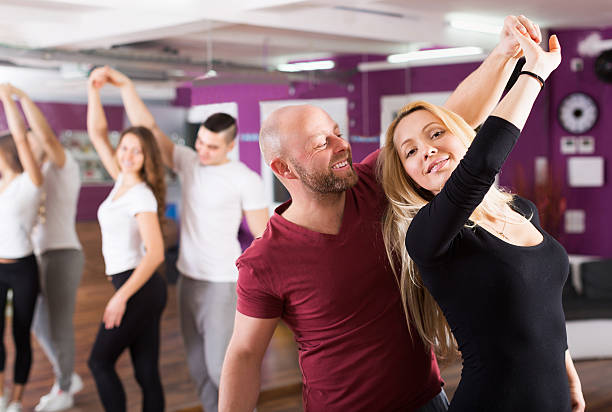We last explored Associate Bronze styling and technique within Fox Trot, Waltz, Swing, Merengue, Mambo, Rumba, and Cha Cha. Now, achieving the required styling and technique skills in Tango, Samba, Polka, and Disco are equally involved.
First of all, the Associate Bronze styling and technique in Tango provides learning contra body movement. You also learn how to use a heel lead. Even harder is Tango’s syncopation (dancing the “one” beat, and holding the “two” beat). You also would have learned to dance at a Below Normal body level.

Secondly, in Samba you learn Nonega Samba motion. That’s a very specific way you roll the body. Samba foot work is equally intricate. Last is barrel roll motion. You also incorporate arm styling that you’ve learned in Rumba and Cha Cha.
Next up is Polka. From Polka, you learn body flight. You also get accustomed to moving really fast.
Similarly, Salsa has the same elements as Cha Cha and Mambo. However, you reverse the Cuban Motion in Salsa.
In addition, Disco (also called Sling) shows a slightly different type of arm styling. It combines elements of both Smooth and Rhythm dances. You reach from your center for the coaster step. You also use the different parts of your feet. Yet you still have Cuban Motion.
At this point after accomplishing Bronze Two (Associate Bronze), you’ve seen most all of the styling and technique that you would need. This should carry you most of the way through the Gold level of ballroom dance.
We accomplish this because the patterns and movements in the following levels will become exponentially more difficult. If you have all of your technique and styling down already, then all you have to do is focus on the upcoming patterns.
In the next blog, we’ll focus on the remaining Bronze levels.
